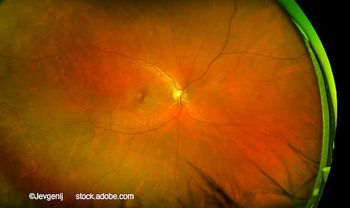
Aberrometry with streaming refractive data enhances results
Analyses of refractive prediction error in a study including 262 eyes implanted with a variety of pseudophakic IOLs shows benefit for using intraoperative aberrometry with streaming refractive data (ORA System with VerifEye, WaveTec Vision).
Take Home
Analyses of refractive prediction error in a study including 262 eyes with a variety of pseudophakic IOLs implanted shows benefit for using intraoperative aberrometry with streaming refractive data (ORA System with VerifEye, WaveTec Vision).
Robert J. Cionni, MD, demonstrates how he obtains optimal surgical results with intraoperative aberrometry. (Video courtesy of Robert J. Cionni, MD)
Dr. Cionni
By Cheryl Guttman Krader; Reviewed by Robert J. Cionni, MD
Salt Lake City-Intraoperative aberrometry with streaming refractive data (ORA System with VerifEye, WaveTec Vision) is an advance over the previous version of the aberrometry platform. Its use during cataract surgery results in significantly better refractive outcomes than would be achieved using standard IOL power calculations, said Robert J. Cionni, MD.
Dr. Cionni, medical director, The Eye Institute of Utah, and adjunct clinical professor of ophthalmology, The John Moran Eye Center, University of Utah, Salt Lake City, presented results from a multicenter evaluation of intraoperative aberrometry-assisted IOL power selection in which refractive prediction errors were calculated using manifest refraction data obtained at 1-month follow-up.
About the study
The study included data from 281 eyes operated on by 12 surgeons at 10 study sites. There were 19 eyes with a history of refractive surgery, and a variety of IOLs were implanted in the study, including toric and multifocal models.
IOL power was selected based on the aphakic refraction and the intraoperative aberrometer manufacturer’s modified refractive vergence formula. In eyes with a toric IOL implanted, the aberrometer was also used to guide IOL alignment and toric magnitude.
The actual mean absolute value of the prediction error (MAVPE) in the cohort was 0.29 ± 0.20 D, while the predicted MAVPE-calculated using the IOL power from preoperative IOL measurements performed using the surgeon’s preferred formula (usually Holladay II)-was 0.34 ± 0.29 D. The difference between the two MAVPE values was statistically significant (p < 0.02).
Results from the distribution analyses of proximity to target refraction also showed a benefit of using intraoperative aberrometry as the 1-month refraction was ±0.5 D of target in 84% of cohort eyes, while that level of accuracy would have been achieved in only 78% of eyes had the preoperative IOL power calculations been used. Analyses performed with eyes categorized by IOL model showed equally good predictability across all lens platforms.
“Patients undergoing cataract surgery today have high expectations for LASIK-like outcomes, and we need to change our mindset to meet those expectations. However, according to data reported by Warren Hill, MD, only a small fraction of cataract surgeons achieve a refractive outcome within 0.5 D of target in 80% of eyes,” Dr. Cionni said.
Findings
“The data from this study show that even in the hands of top-tier surgeons who pay meticulous attention to preoperative measurements, and utilize newer IOL power calculation formulas, use of this intraoperative aberrometry platform offers a method to provide cataract surgery patients with better refractive results,” he continued.
A subgroup analysis of 33 eyes with a toric IOL implanted showed that with intraoperative aberrometer-guided IOL alignment, mean astigmatism was reduced from 1.94 D preoperatively to 0.39 D at 1 month, and 79% of eyes with a toric IOL had ≤ 0.50 D of residual astigmatism.
Dr. Cionni contrasted these outcomes with the results from the FDA clinical study of the foldable acrylic toric IOL (AcrySof Toric, Alcon Laboratories) where in a cohort of 244 eyes, the mean postoperative astigmatism was 0.55 D and only 62% of eyes had ≤ 0.50 D of residual astigmatism.
He also presented results from his personal, post-launch commercial experience using intraoperative aberrometry with streaming refractive data that showed in a series of 101 eyes-including cases performed with or without a femtosecond laser, but excluding those with a history of corneal refractive surgery-93% achieved a refractive outcome within 0.5 D of target.
“The aphakic refraction measurement can be affected by a number of variables,” he said. “The streaming data upgrade to the intraoperative aberrometer allows the surgeon to confirm that the output being used to guide power selection and toric IOL rotation is a stable reading.
“The outcomes at our Salt Lake City surgery center show that when operating with state-of-the art technology, it is now possible to deliver LASIK-like refractive results to our cataract surgery patients,” Dr. Cionni concluded.
Robert J. Cionni, MD
Dr. Cionni is a consultant to WaveTec Vision and Alcon Laboratories.
Newsletter
Don’t miss out—get Ophthalmology Times updates on the latest clinical advancements and expert interviews, straight to your inbox.



















































.png)


